Key takeaways:
- A budgeting app is a digital tool that helps users track income, expenses, and savings, offering insights to promote better financial management.
- Popular budgeting apps like Mint, YNAB, and PocketGuard provide features that simplify expense tracking, budget customization, and real-time alerts to help users maintain financial control.
- Personal experiences highlight the transformative power of budgeting apps in reshaping spending habits and fostering accountability in financial goals.
- Setting specific financial goals and regularly reviewing budget categories can enhance the effectiveness of budgeting apps, making financial management more engaging.
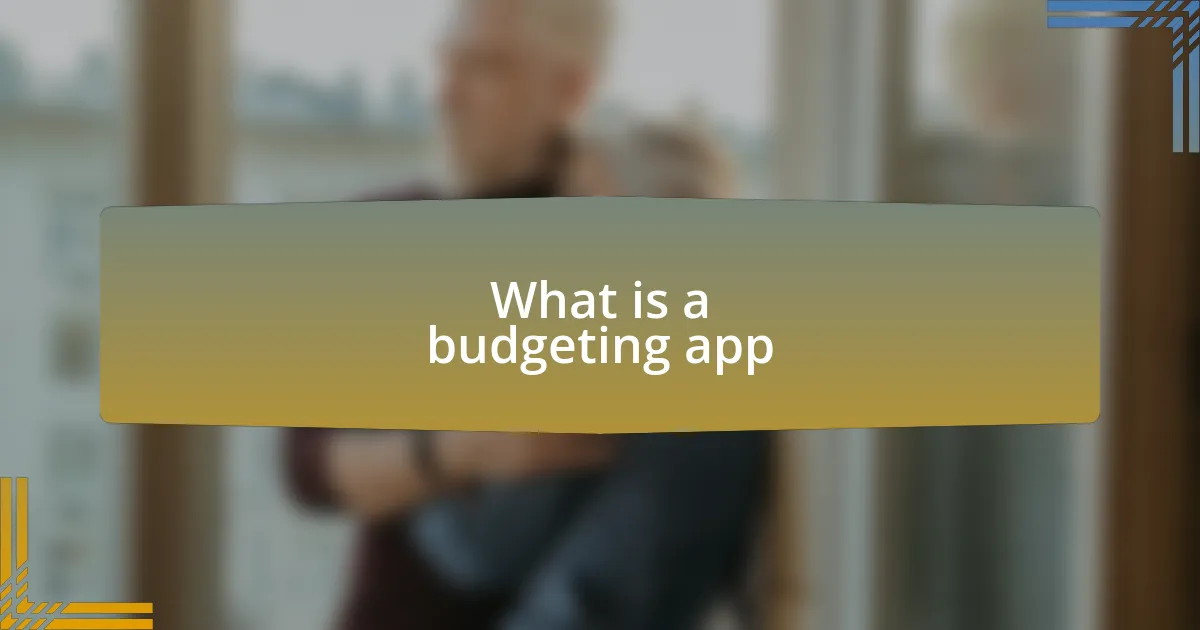
What is a budgeting app
A budgeting app is a digital tool designed to help individuals manage their finances more effectively. It allows users to track their income, expenses, and savings goals all in one place, often in real-time. I remember when I first started using one; it felt like having a personal financial advisor right in my pocket, guiding me through my spending habits.
These apps can categorize expenses, which helps users see where their money is going. Have you ever been surprised by how much you spend on dining out? I was, too. A budgeting app made me aware of those hidden costs, prompting me to rethink my spending and prioritize saving for experiences that truly matter, like traveling or enjoying a nice dinner with loved ones.
Moreover, many budgeting apps come with features that offer insights and forecasts based on your spending patterns. This capability can evoke a sense of accountability and motivate you to stick to your financial goals. I often find it rewarding to set a savings target and watch as I get closer to reaching it—it’s like a mini celebration every time I meet a milestone! If you’re still managing your budget with pen and paper, I encourage you to consider making the switch; the benefits are truly life-changing.
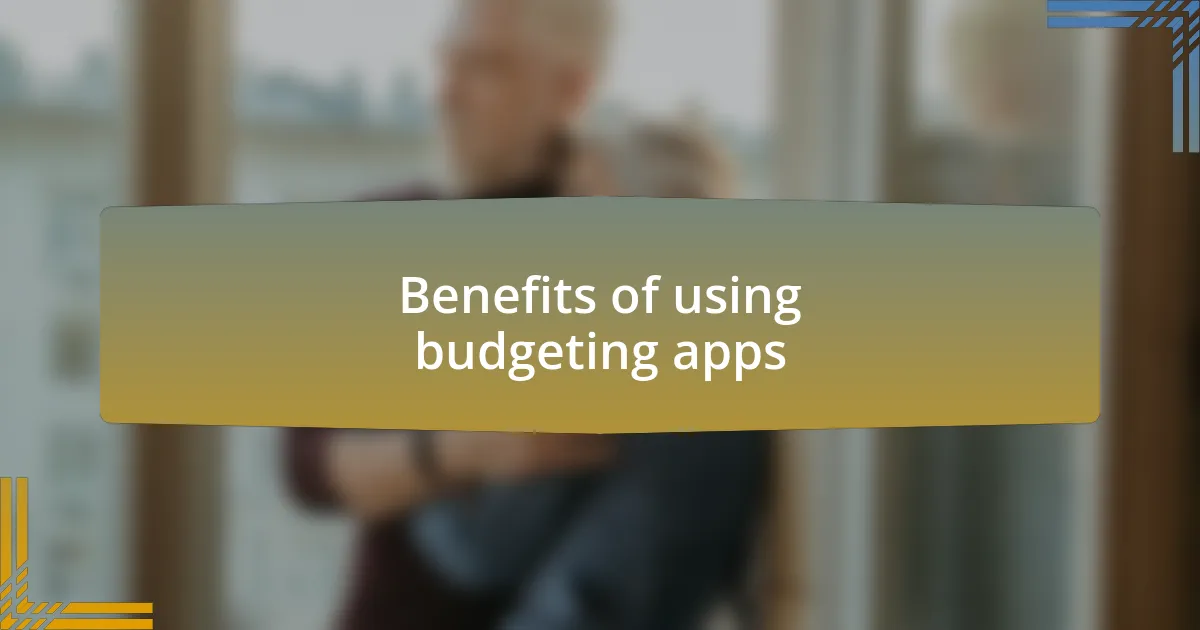
Benefits of using budgeting apps
When I first discovered budgeting apps, the ease of tracking my finances was a game-changer. One feature I particularly love is the ability to set customized budgets for different categories. Have you ever tried to stick to a budget only to forget what you allocated for entertainment? With these apps, I can see exactly how much I’m spending in real time, which has helped me curb impulse buying and maintain a healthier financial lifestyle.
Another significant benefit is the automation of financial tasks. I used to dread the monthly chore of tallying expenses—wouldn’t it be nice if that could be done for you? Many apps can automatically sync with your bank accounts, categorizing transactions without any work on your part. I remember feeling a wave of relief when I realized I could receive real-time alerts if I was nearing my budget limits, which helped me stay accountable and avoid overspending without stress.
Engaging with my budgeting app has also fostered a sense of financial empowerment. It’s inspiring to see my savings grow over time, encouraging me to set ambitious goals. Have you ever felt that rush of satisfaction when reviewing your progress? It’s a constant reminder of my priorities and helps reframe my perspective on money, turning it from a source of anxiety into a tool for achieving my dreams.
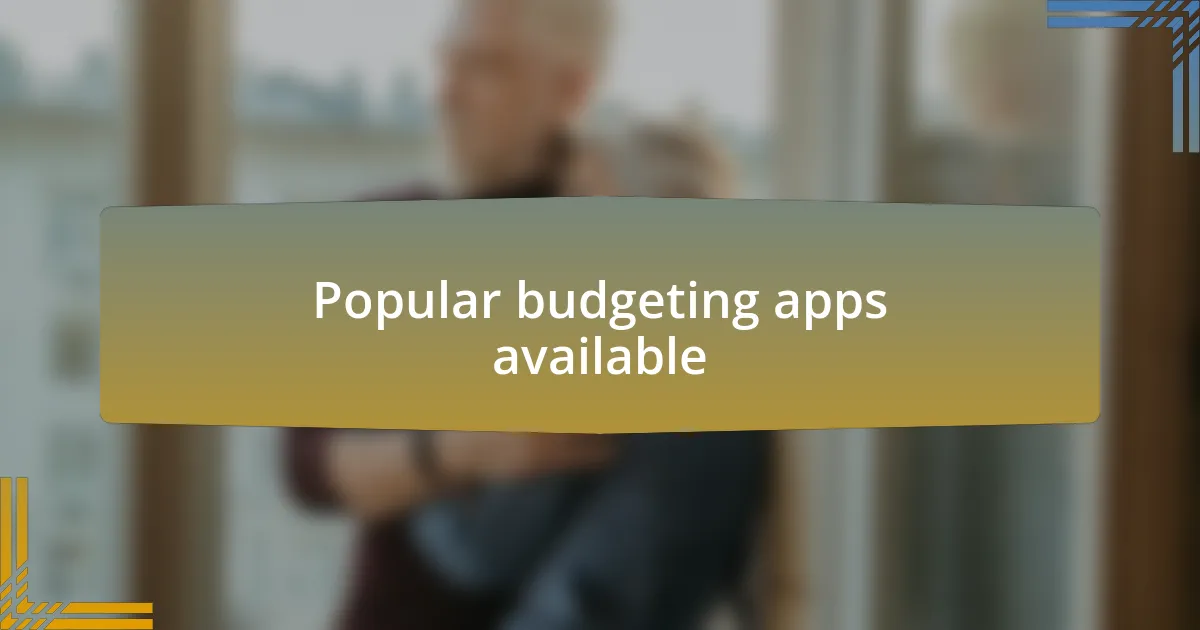
Popular budgeting apps available
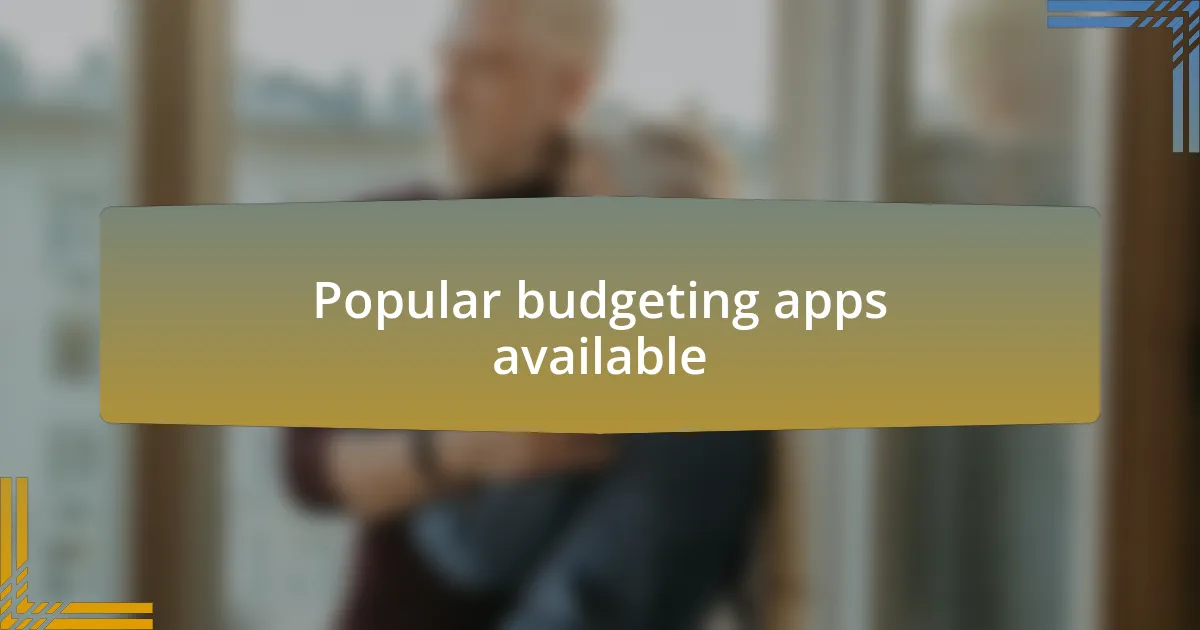
Popular budgeting apps available
One of the most popular budgeting apps I’ve come across is Mint. I remember downloading it during a particularly hectic financial month, and the way it aggregates all my accounts was nothing short of amazing. Have you ever wanted to see your financial picture in one glance? Mint made it possible for me to understand where my money was going, providing instant insights that helped me make smarter spending choices.
For those who prefer a more hands-on approach, YNAB (You Need A Budget) is another great option. I’ve tried it out and found its proactive budgeting philosophy appealing; every dollar has a job, teaching me to allocate my funds wisely. Have you ever felt overwhelmed by expenses? With YNAB, I was able to break my spending into manageable categories, giving me clarity and control over each paycheck.
Another app worth mentioning is PocketGuard. This one resonated with me because of its simple yet effective feature that shows how much I have left to spend after accounting for bills, goals, and necessities. The lightbulb moment for me was when I discovered that I could easily identify unnecessary subscriptions, which freed up extra money for things that truly brought me joy. Is it time for you to regain control over your spending habits?
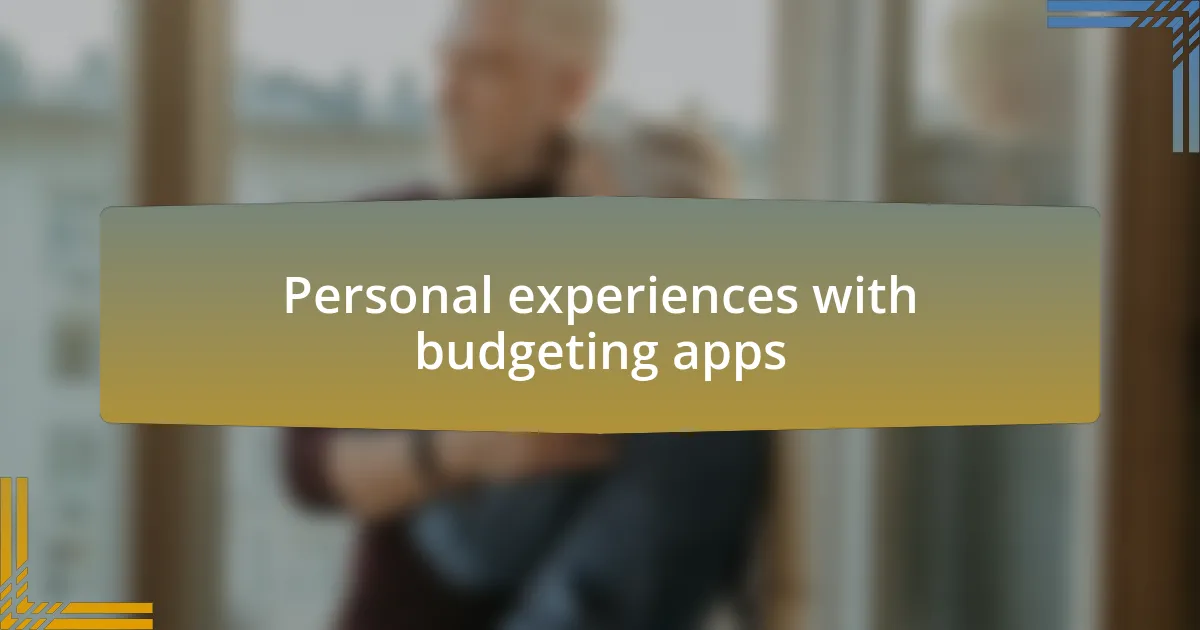
Personal experiences with budgeting apps
I’ve had a rollercoaster of experiences with budgeting apps that has truly shaped my financial journey. For instance, when I first started using Mint, I felt a mix of excitement and apprehension. It was like walking into a room filled with mirrors, reflecting every expense, both good and bad. Have you ever had a moment when reality hits you? I certainly did when I realized how much I was spending on dining out each month.
Transitioning to YNAB was an eye-opener for me. Adopting the envelope budgeting method within the app helped me to visualize my spending in a whole new light. One memorable instance was when I redirected funds from my “entertainment” envelope to cover an unexpected car repair. It felt empowering to make those choices, and honestly, it was a reminder of how budgeting can create a sense of liberation rather than restriction.
Using PocketGuard made my budgeting approach even simpler. I recall the day I discovered the “In My Pocket” feature—it felt like uncovering a hidden treasure. Suddenly, the anxiety of overspending disappeared as I could see exactly how much leeway I had. Have you ever wished for a straightforward way to track your spending? That moment for me reaffirmed why staying on top of personal finances is essential, even in retirement.
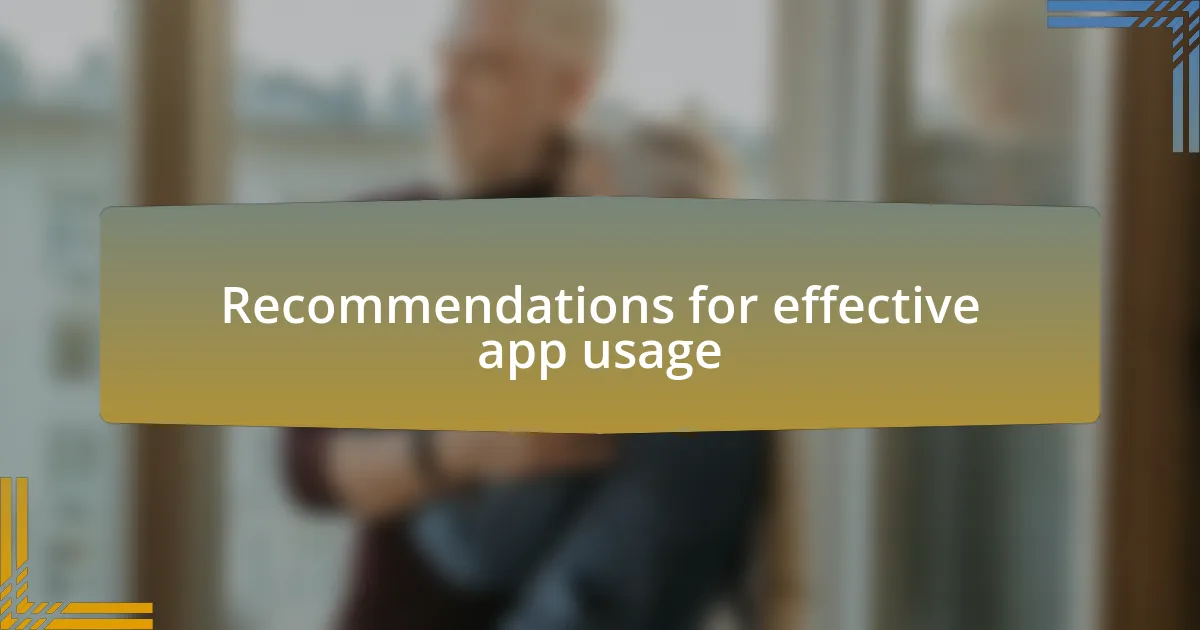
Recommendations for effective app usage
When using budgeting apps, one of my top recommendations is to set specific financial goals within the app. I remember when I decided to save for a trip to Europe; marking that goal in YNAB made my budget feel more like a roadmap. It transformed the tedious task of tracking expenses into an exciting journey toward something meaningful—hasn’t a visual goal ever motivated you in a similar way?
Another tip I’ve found valuable is to regularly review and adjust your budget categories. Early on, I kept finding myself overspending in my “grocery” category. By analyzing my weekly expenses, I realized that I had to tweak my budget to better reflect my habits. This flexibility not only eased my financial stress but also proved how crucial it is to adapt as my spending needs change—have you ever had to pivot your budget to tackle unexpected expenses?
Engaging with your app daily can significantly enhance its effectiveness. I committed to opening my PocketGuard every morning with my coffee, and it quickly became a habit. This simple act of checking in not only keeps me accountable, but it also continually reminds me of my goals—don’t you think a daily touchpoint can keep you focused on your financial journey?